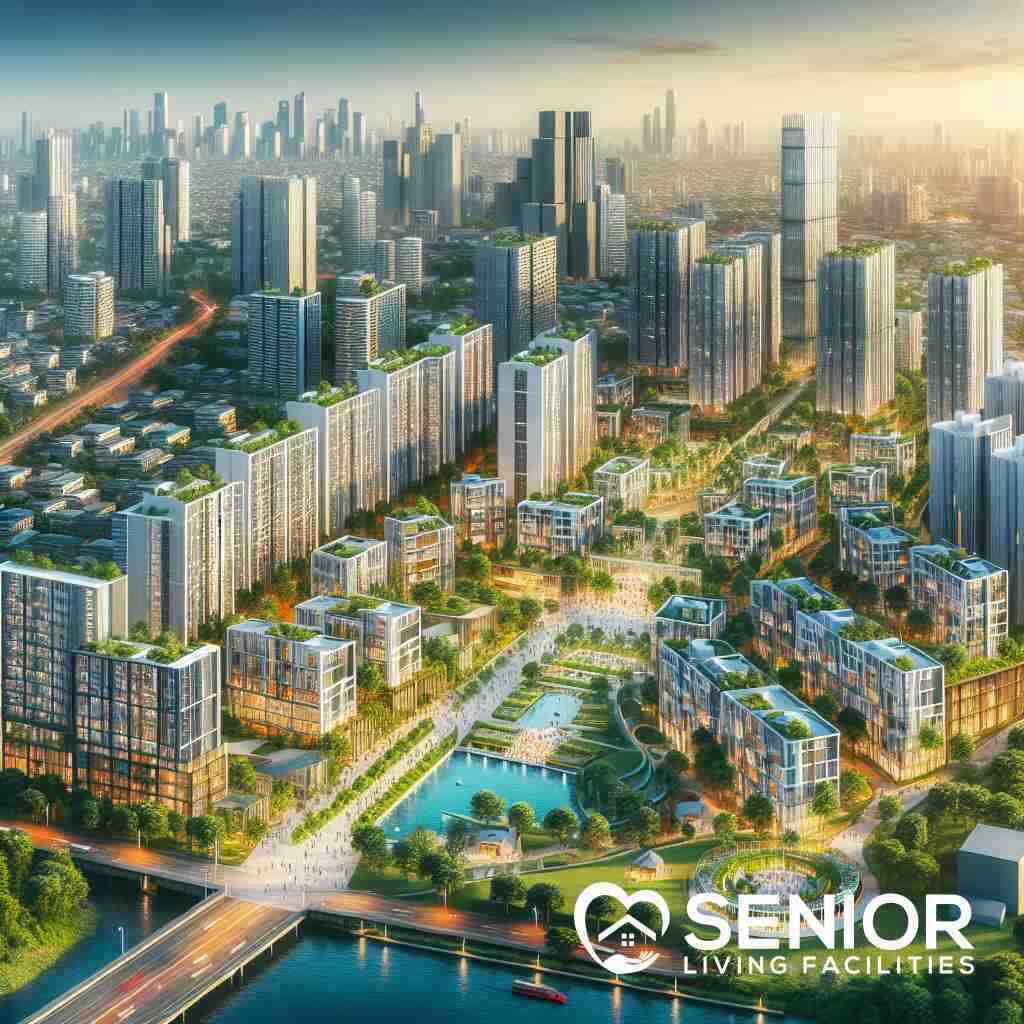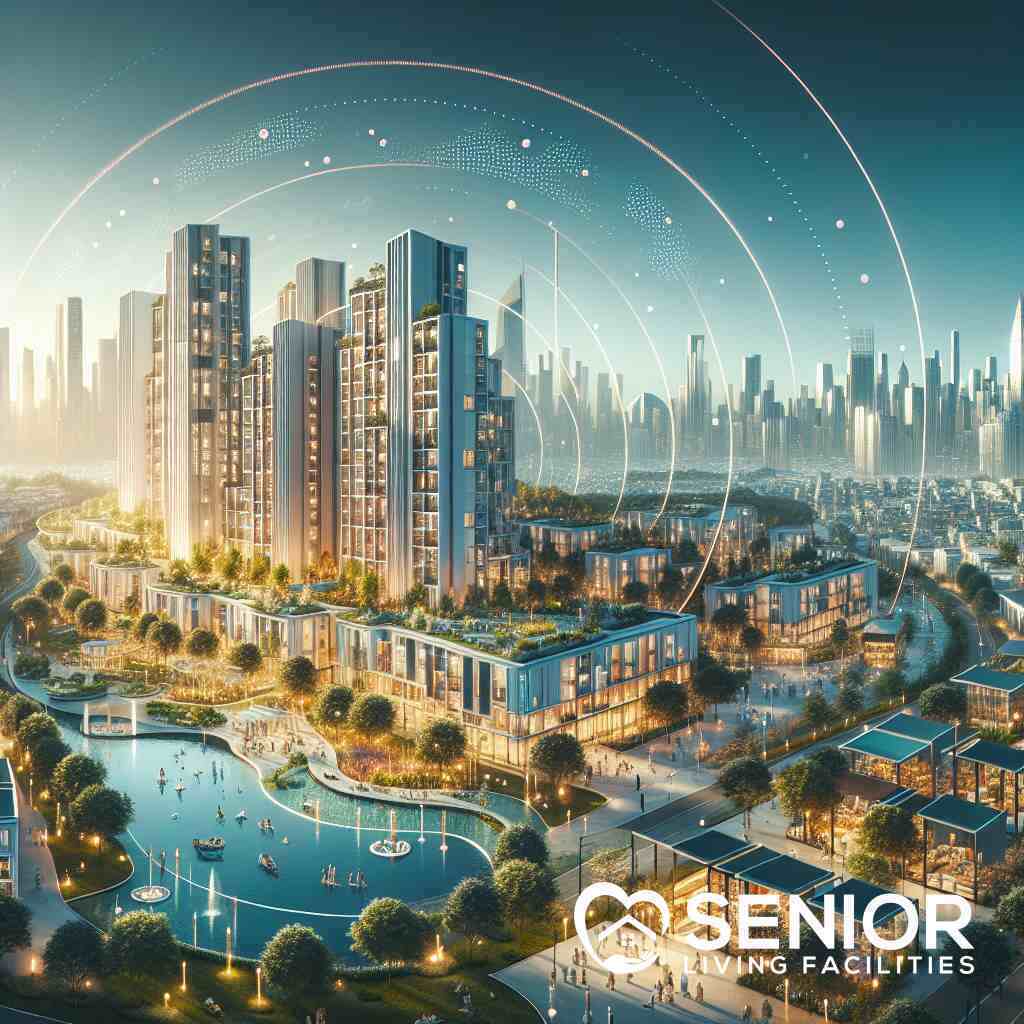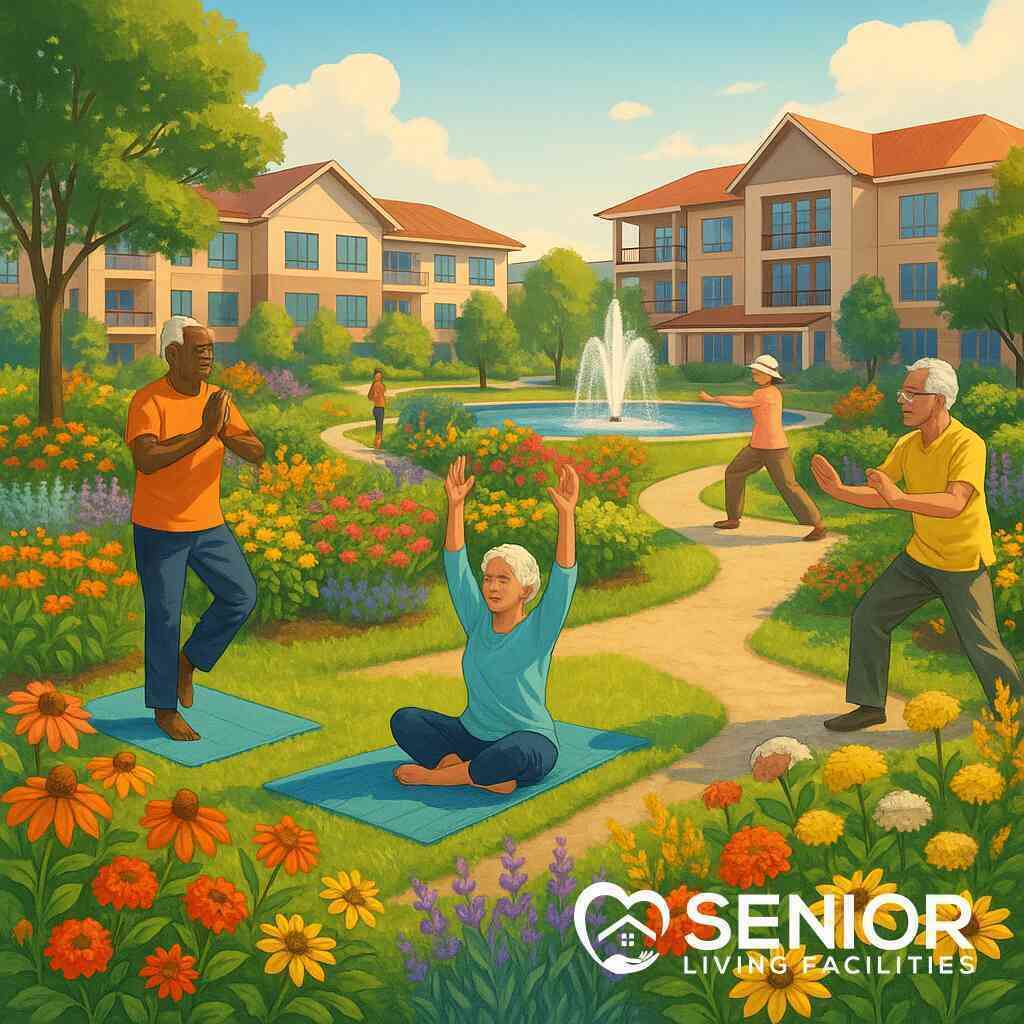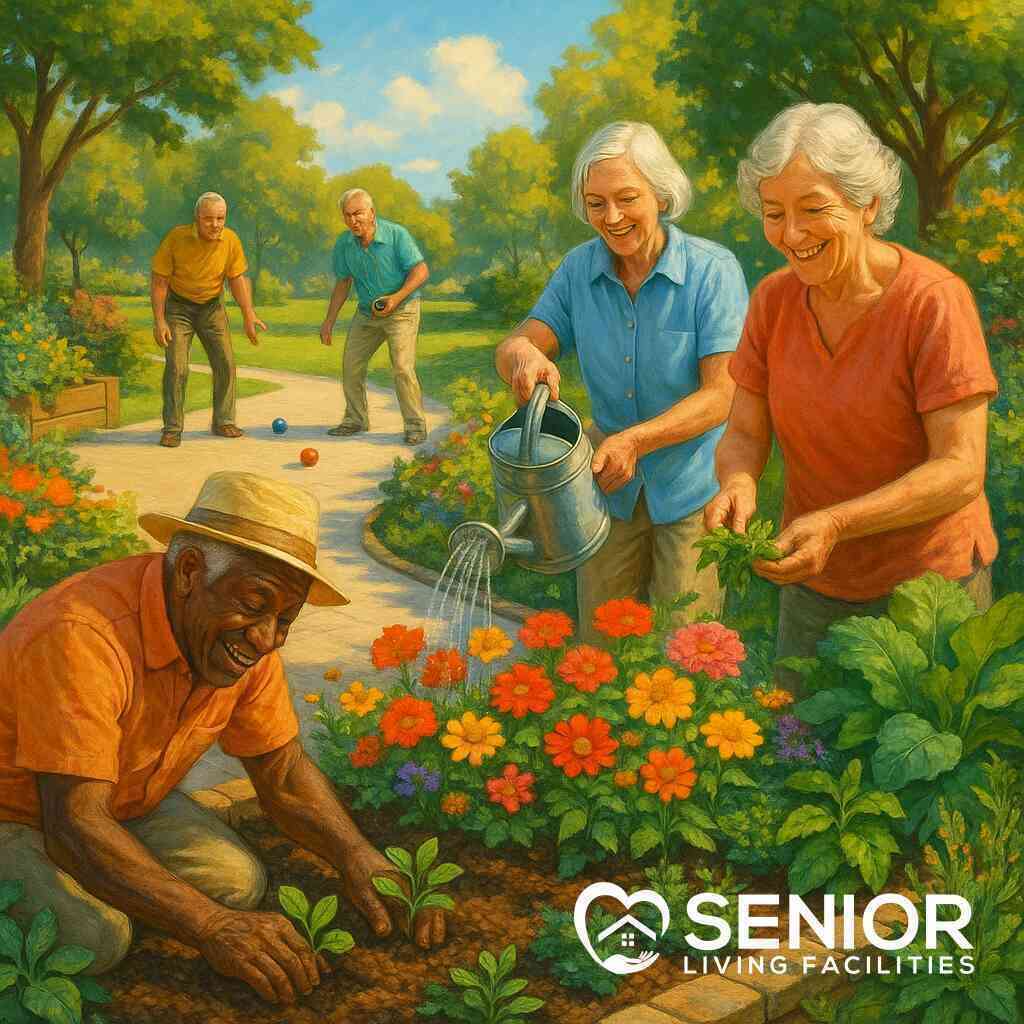
Why Senior Living Facilities Are Essential in Urban Scapes
June 18, 2025
Foreword: The Urban Canvas of Senior Living
Redefining City Life: Senior Living in the Metropolis
Urban environments present a dynamic lifestyle even for the senior demographic. As cities have evolved, so has the concept of integrating senior living facilities into the bustling metropolitan life. These facilities redefine city living, offering a confluence of convenience, culture, and community for older adults. By embedding these communities within city centers, seniors gain access to a wealth of opportunities and resources not found in rural settings. This new urban senior living approach offers the vitality of city life while ensuring the specialized care and attention seniors require.
The Intersection of Modern Trends and Eldercare Needs
In today’s fast-paced urban centers, the alignment of modern trends with eldercare needs has never been more crucial. Cities are becoming more senior-friendly as they adapt to demographic shifts, reflecting a deeper understanding of the diverse needs of older adults. The demand for user-centric senior housing solutions has brought forth innovative design and planning, enabling seniors to enjoy enriched urban senior living opportunities. From high-rise living with stunning cityscape views to communities offering curated experiences, integrating modern trends into eldercare facilities is fostering an optimistic reflection of aging in place within city limits.
Understanding Urban Senior Living as a Growing Priority
With populations aging and urban areas expanding rapidly, the need for well-planned senior living facilities in cities is paramount. Urban living is not merely about convenience, it is about ensuring a quality of life that accommodates the unique requirements of seniors. The importance of senior living in urban areas is reflected in the attention given to creating inclusive and supportive communities that prioritize safety, accessibility, and a sense of belonging for all residents. These communities serve as vibrant examples of how cities can be tailored to support both the autonomy and well-being of seniors, making urban senior living a priority for forward-thinking urban planning.
The Dynamics of Urbanized Senior Living
Adapting to Skyward Expansion: High-Rise Senior Living
In the urban jungle where space is a prized possession, high-rise senior living stands as a testament to modern architectural innovation. These towering residences not only offer breathtaking views of the cityscape but also foster vibrant communities of seniors within their walls. High-rise senior living facilities are designed with accessibility in mind, featuring elevators and adaptive spaces that cater to various mobility needs. By providing amenities such as rooftop gardens, communal lounges, and recreational areas, these structures serve more than just a residential purpose; they become hubs of social interaction and well-being for seniors. This concept truly exemplifies how urban environments for seniors can be both accommodating and inspiring.
Furthermore, living in these vertical communities allows older adults to be in the heart of urban action while still enjoying a tranquil lifestyle. Access to shopping centers, cultural venues, and healthcare services is made easier, ensuring that seniors remain connected and engaged with the wider community. High-rise living thus becomes a perfect blend of independence and support, bridging the gap between seclusion and social engagement, much like an urban senior living haven.
Urban Footprints: Strategically Located Facilities for Effortless Accessibility
Strategic location is at the heart of urban senior living, and these facilities are often nestled in key neighborhoods that optimize accessibility and convenience. Proximity to public transportation ensures that seniors can navigate the city with ease, while nearby parks provide spaces for recreation and relaxation. These thoughtfully placed facilities create an effortlessly accessible environment where seniors can thrive.
Moreover, the integration of these facilities into urban settings allows for seamless access to essential services such as grocery stores, pharmacies, and dining establishments. The focus on location also means that families and loved ones find it easier to visit, further enhancing the support network for residents. This urban accessibility transforms senior communities into vibrant spaces that cater to the needs and desires of older adults, promoting a dynamic and fulfilling lifestyle.
Metropolitan Synergy: Integrating Eldercare into the Urban Fabric
The integration of eldercare into urban life is a growing trend that is redefining how cities cater to their aging populations. By weaving senior services into the urban fabric, cities are creating environments that are not only age-friendly but also inclusive. This synergy is reflected in the development of urban senior assisted living urban senior assisted living facilities that combine residential living with healthcare and recreational services.
These facilities often collaborate with local businesses and cultural institutions to offer residents a wide range of activities and events. Whether it’s attending a local theater production or participating in a community workshop, the synergy between urban living and eldercare ensures that seniors remain active, engaged, and connected to the cultural tapestry of the city they call home. This integration is vital for fostering vibrant communities where seniors can age gracefully and with dignity.
The Role of City Infrastructure in Senior Housing
City infrastructure plays a pivotal role in shaping the landscape of senior housing. From public transit systems to healthcare accessibility, the thoughtful design of urban infrastructure ensures that senior living communities are not isolated but well-connected. Investments in infrastructure such as pedestrian-friendly walkways, ramps, and public facilities enhance the mobility and independence of senior residents.
Urban planners and policymakers are increasingly recognizing the importance of incorporating senior care in city infrastructure to support the well-being of older adults. This recognition leads to the creation of environments that are easier to navigate and more conducive to aging in place. As cities continue to expand, the need for infrastructure that accommodates the unique requirements of seniors becomes more pressing, emphasizing the necessity of integrating senior housing seamlessly into the urban context.

The Multifaceted Benefits of Urban Senior Communities
Proximity to Advanced Medical Services: A Lifesaver
Urban senior living offers unparalleled access to advanced medical services, which is crucial for the well-being of older adults. City-based senior communities benefit from proximity to state-of-the-art hospitals and specialized clinics. This close access can be a literal lifesaver in emergencies, ensuring prompt medical interventions and regular health check-ups for chronic conditions. The integration of health infrastructure within metropolitan areas allows urban seniors to enjoy peace of mind knowing that comprehensive care is just around the corner, catering to both immediate healthcare needs and long-term wellness plans.
Furthermore, metropolitan areas often house pioneering research institutions that pioneer new treatments and therapies beneficial for seniors. For individuals seeking a harmonious blend of expert medical attention and comfortable living, urban senior living opportunities stand out as an optimal choice. These facilities not only support physical health but also focus on mental and emotional well-being, making them a holistic haven for the senior population.
Cultural and Social Embedding: Seniors Thriving in Urban Culture
Urban centers are cultural epicenters bustling with diversity and endless activities, making them ideal for seniors seeking vibrant lives. Living within these retirement communities in cities enables older adults to immerse themselves in a variety of cultural and social events-be it attending art exhibitions, music festivals, or local theater performances. Such abundant opportunities for cultural engagement significantly enhance the quality of life for urban seniors, fostering an environment where they thrive in the heart of urban culture.
The social networks within these communities are equally vital, as they help mitigate loneliness and boost mental health. Residents have ample chances to forge connections with neighbors over shared interests, joined by the colorful backdrop of city life. For seniors eager to maintain an active social calendar, urban retirement options present limitless possibilities that strengthen community bonds, emphasize shared experiences, and allow seniors to remain deeply integrated into the urban cultural landscape.
Comprehensive Urban Amenities: From Parks to Performance Arts
Urban senior communities are enriched with comprehensive amenities that support an active and fulfilling lifestyle. City centers are home to beautifully landscaped parks, perfect for leisurely strolls or participating in outdoor fitness classes. These green spaces offer a breath of fresh air and serve as gathering spots for community events, enhancing socialization among residents.
Beyond the parks, metropolitan areas feature numerous venues for performance arts, enriching the cultural life of senior residents. Accessible galleries, theaters, and concert halls ensure a constant stream of events for seniors to enjoy. The availability and variety of amenities underscore the unique vibrancy of living in city-centered senior housing, providing a perfect blend of leisure, recreation, and culture designed to uplift and inspire seniors every day.
Public Transportation and Urban Mobility for Seniors
Seamless access to public transportation is a hallmark of urban elder living, making it easier for seniors to navigate the city independently. Urban areas boast extensive transportation networks that connect individuals to all corners of the city, fostering independence and mobility among senior residents. Whether it’s traversing to a medical appointment or enjoying a day out exploring city attractions, public transit is an invaluable resource for seniors relying on convenient and cost-effective mobility solutions.
Urban mobility extends beyond public transportation, with pedestrian-friendly infrastructures like well-maintained sidewalks, pedestrian crossings, and ramps enriching the experience of urban high-rise senior living. These elements of city infrastructure make travel not only possible but enjoyable, empowering seniors to maintain autonomy and access all the amenities city life has to offer. For those looking for a dynamic lifestyle with freedom and flexibility, senior living in urban environments is a compelling option that caters to both mobility needs and urban adventure.
Challenges and Solutions in Urban Senior Housing
Navigating Urban Density: Space versus Needs
Urban density presents both challenges and opportunities for senior living. The lack of space necessitates innovative architectural solutions such as multifunctional apartments and shared communal areas, ensuring efficient utilization of limited urban land. By implementing smart urban design, cities can cater to senior residents without compromising their comfort or access to essential services. These innovative solutions mirror broader metropolitan elder care trends that aim to harmonize high-density living with elderly care needs, accommodating urban lifestyles while promoting community well-being.
Additionally, thoughtful zoning policies play a crucial role in addressing urban density issues. Senior communities need to be thoughtfully integrated into urban environments, ensuring that these spaces are not isolated but rather seamlessly woven into the city’s fabric. Such integration facilitates accessibility to nearby amenities and services, encouraging a harmonious city life for elders and optimizing the role of senior living facilities within urban landscapes.
Addressing Affordability: Strategies for Cost-Effective Urban Living
Affordability remains a pressing issue in urban senior living, with many older adults facing financial constraints. Innovating the comparison of assisted living options is essential to delivering diverse and economical choices for senior housing. Encouraging public-private partnerships can bridge financial gaps, providing funding for affordable housing projects specifically designed for senior needs.
Urban planners and policymakers must prioritize subsidies, tax incentives, and rent-control measures to maintain affordable options for seniors who wish to remain in urban environments. These financial strategies ensure that urban senior living remains accessible and inclusive. Accessibility, coupled with strategic planning, can transform cities into havens of affordable, quality senior living that addresses the varying financial capacities of older residents.
Tailoring Urban Assisted Living Plans for Diverse Needs
Designing urban assisted living plans requires a nuanced approach to cater to diverse senior populations. Every city fabric differs, necessitating personalized solutions that address unique demographic compositions and cultural backgrounds. Implementing community-centered programs within senior living facilities promotes inclusivity, allowing for tailored activities that resonate with communal identities and foster belonging.
Moreover, senior living facilities are implementing more innovative and flexible care models to meet individual needs. Comprehensive services ensure that traditional caregiving roles are expanded to include elements of lifestyle enhancement and independence promotion. By fostering an environment of adaptability and personalization, cities offer solutions that are not only inclusive but progressive, meeting the complex needs of aging adults in urban settings.
Developing Urban Elder Community Support Systems
Establishing strong community support networks is integral to successful urban elder living. These systems should extend beyond physical care to incorporate emotional support and socialization opportunities. Urban dwellers can benefit from urban senior living opportunities that promote community participation, reduce isolation, and encourage integrated communal activities facilitated through senior centers and neighborhood initiatives.
Collaborations between municipal authorities, non-profits, and private enterprises enrich the support infrastructure, furnishing seniors with resources that enhance their quality of life. This network can include technology-assisted solutions, peer support groups, and volunteer programs that strengthen community connections among urban seniors, fostering a genuine sense of belonging and collective vitality. By cultivating robust community support systems, cities can nurture environments where older adults lead enriched, participatory lives.
Visions of the Future: Urban Retirement Redefined
Senior-friendly Cities of Tomorrow: Planning and Innovations
The vision for senior-friendly cities of tomorrow is anchored in thoughtful urban-based health care for seniors. Cities are gradually evolving to embrace innovations that cater specifically to the aging population, turning urban areas into vibrant, inclusive hubs. Urban planners are integrating age-friendly designs, focusing on universal accessibility and mobility, ensuring that cities accommodate the physical and social needs of seniors. These developments extend to technological advancements that enhance independence and security, such as smart home solutions and health-monitoring systems.
Moreover, cities are fostering partnerships with senior living facilities to create environments that not only focus on care but also emphasize engagement and interaction. By weaving these considerations into the urban fabric, metropolitan areas can transform into sanctuaries of accessibility and wellness for older adults. This future-focused approach in city planning can radically redefine retirement living, making urban centers more appealing to seniors looking for dynamic yet supportive environments to age gracefully.
Urban Aging with Grace: Policies Shaping the Narrative
Policy frameworks play a pivotal role in shaping the narrative of urban aging with grace. Forward-thinking policies are being formulated to address the intricacies of senior living, emphasizing sustainability, accessibility, and inclusivity. Governments and organizations are collaborating to introduce policies that ensure affordable housing, community-based support networks, and health services tailored to senior needs. These policies contribute to creating city landscapes where seniors can thrive holistically.
Emphasizing the importance of senior living in urban areas will dictate the success of these initiatives, encouraging cities to integrate senior care considerations into their growth strategies. By promoting housing diversity and facilitating the integration of health and social services within urban infrastructures, policies are paving the way for a seamless blend of city living and elder care. This regulatory transformation allows seniors to experience urban life fully without compromising on the essential care or communal connections that significantly enhance their quality of life.
Cultivating Age-in-Place Paradigms in Metropolitan Areas
Cultivating age-in-place paradigms in metropolitan areas necessitates a strategic blend of community support, innovative housing solutions, and accessible services. The focus is on empowering seniors to remain in their homes and communities, fostering autonomy and long-term community bonds. To achieve this, cities are adopting flexible housing options and embracing community designs that support multigenerational interaction and social engagement.
Integrating urban environments for seniors with a focus on agility and choice is key to these paradigms. Metropolitan areas are increasingly recognizing the value of providing supportive services directly within senior communities, thus minimizing the need for relocation. Through public and private sector collaboration, there is a concerted effort to develop infrastructures that support aging in place, such as enhanced walking paths, accessible public transportation, and technology-driven care solutions. This comprehensive approach ensures that metropolitan living is not just viable for seniors but is an enriching experience tailor-made for grace and dignity in aging.

Conclusion: Envisioning a Senior-Inclusive Urban Reality
Reflections on Urban Elder Living
Urban environments are becoming more senior-friendly as they adapt to the needs of older adults. These multifaceted regions offer vibrant cultural engagement and essential services conveniently placed at the seniors’ doorstep. The result is an enriched lifestyle that seamlessly integrates care and independence. By focusing on the value that urban elder living communities bring, cities can ensure that their aging populations thrive within an ever-evolving landscape. Embracing this urban shift underscores a larger commitment to enhancing the lives of seniors through thoughtful urban planning, further solidifying these areas as havens for active and fulfilled aging.
Next Steps for Embracing City-Based Senior Communities
Moving forward, urban centers must prioritize the development and proliferation of senior living facilities tailored to the dynamic needs of older adults. This involves integrating cutting-edge design with healthcare services and amenities that empower seniors to lead independent lives. Catering to the elderly within city centers not only involves adapting physical spaces but also creating adaptable services and support systems. Cities like metropolitan senior living in Illinois provide tangible examples of how these communities can flourish. Urban planners and developers need to adopt this model of integration, ensuring vibrant, engaging, and supportive environments for seniors.
Collaborative Efforts for an Inclusive Metropolitan Lifestyle
Creating an inclusive metropolitan lifestyle requires cooperative efforts across communities, government, and the private sector. Collaborative projects need to focus on enhancing infrastructure and ensuring comprehensive access to urban resources for seniors. Efforts must encompass integrated health services, social engagements, and transportation solutions tailored to senior needs. In places like urban elders living in Georgia, these collaborations can serve as benchmarks for developing integrated and inclusive environments. Aligning these efforts with progressive policies ensures that the needs of seniors are prioritized, thus fostering inclusive urban landscapes that redefine aging in our society. In doing so, we pave the way for cities that celebrate and support their aging populations, transforming urban centers into nurturing homes for seniors across the nation.
Frequently Asked Questions
Question: How do senior living facilities enhance urban elderly living in city centers?
Answer: Senior living facilities play a crucial role in enhancing urban elder living by integrating essential services and amenities into city centers. These facilities offer seniors easy access to advanced medical care, cultural activities, and social engagement opportunities, promoting an enriched lifestyle. By being strategically located in metropolitan areas, senior living facilities provide convenience, connectivity, and a sense of community, making them vital for aging gracefully in urban environments.
Question: What makes urban senior care facilities a preferred choice for seniors in cities?
Answer: Urban senior care facilities are a preferred choice for seniors in cities due to their accessibility to healthcare services, transportation networks, and cultural amenities. These facilities are designed to support the unique needs of older adults through thoughtful urban planning and community engagement. Seniors benefit from proximity to hospitals, theaters, parks, and social venues that enrich their city lifestyle. By prioritizing safety, inclusivity, and engagement, urban senior care facilities ensure a seamless integration of care and urban living.
Question: How do urban senior living options contribute to cultural and social embedding for seniors?
Answer: Urban senior living options significantly contribute to cultural and social embedding for seniors by placing them in the heart of vibrant city life. These facilities offer access to diverse cultural events, such as art exhibitions and music festivals, which foster an enriching and dynamic living experience. The strategic location within urban environments allows seniors to actively participate in the cultural tapestry of the city, enhancing their quality of life through continuous social interaction and engagement.
Question: Why are senior living facilities essential in urban landscapes, as discussed in the blog ‘Why Senior Living Facilities Are Essential in Urban Scapes’?
Answer: Senior living facilities are essential in urban landscapes because they address the growing needs of aging populations in cities. The blog ‘Why Senior Living Facilities Are Essential in Urban Scapes’ highlights how these facilities integrate healthcare, recreation, and residential living into city centers. By doing so, they offer older adults the convenience and accessibility necessary for maintaining their independence and well-being. Additionally, these facilities bring a sense of community and belonging to seniors, enabling them to lead fulfilling lives within the bustling metropolis.
Question: What role does urban infrastructure play in enhancing city life for seniors?
Answer: Urban infrastructure plays a pivotal role in enhancing city life for seniors by ensuring easy navigation and accessibility throughout the city. Features like pedestrian-friendly walkways, public transit systems, and nearby essential services empower seniors to remain active and independent. Well-thought-out urban infrastructure supports senior-specific needs, making cities not only livable but enjoyable for older residents. This fosters an environment where seniors can confidently explore their city, participate in community events, and enjoy the rich amenities urban life offers.


